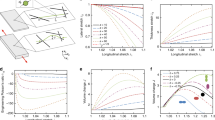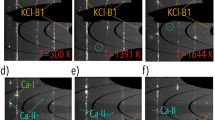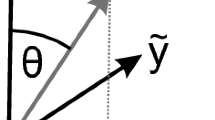Abstract
IN this note a method of quantitative calculation and construction of Laue patterns from bent sodium chloride crystals is proposed, which is in good agreement with experiment. It is known1 that when a crystal rod is subjected to tension or pressure, the angle between the direction of the force and the direction of slipping tends respectively to decrease or to increase.
This is a preview of subscription content, access via your institution
Access options
Subscribe to this journal
Receive 51 print issues and online access
$199.00 per year
only $3.90 per issue
Buy this article
- Purchase on Springer Link
- Instant access to full article PDF
Prices may be subject to local taxes which are calculated during checkout
Similar content being viewed by others
References
Schmid, E. und Boas, W., ” Kristallplastizität”, p. 62, Berlin (1935).
Joffe, A., Kirpitaschewa, M. W. und Lewitzky M. A., Z. Phys., 22, 286 (1924).
Author information
Authors and Affiliations
Rights and permissions
About this article
Cite this article
KOMAR, A. Theoretical and Experimental Laue Patterns from Bent Sodium Chloride Crystals. Nature 137, 397–398 (1936). https://doi.org/10.1038/137397a0
Issue Date:
DOI: https://doi.org/10.1038/137397a0
Comments
By submitting a comment you agree to abide by our Terms and Community Guidelines. If you find something abusive or that does not comply with our terms or guidelines please flag it as inappropriate.



